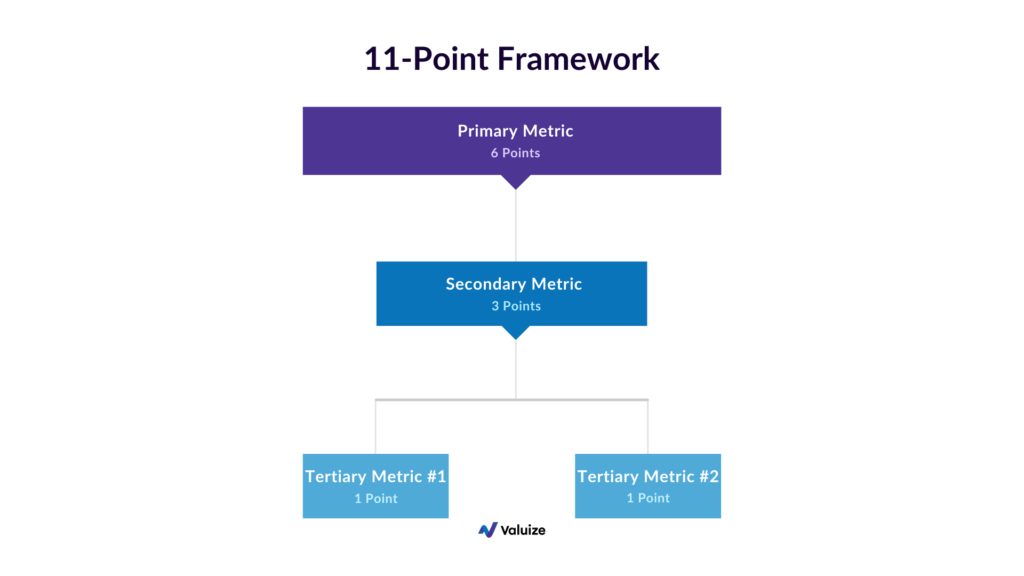Evolve Your SaaS Revenue Model For Maximum NDR
As a revenue leader, are you empowering and incentivizing all of your customer-facing teams to drive maximum NDR in your organization?
Driving Net Dollar Retention (NDR) cannot be the sole responsibility of your Sales, Customer Success or Renewals department alone. In order to achieve best-in-class NDR, these functions should have distinct yet complementary responsibilities that enable an integrated customer lifecycle and seamless handoff that creates measurable value at each stage of your customer journey. Without this connected approach to delivering customer value, you may be leaving significant revenue-generating opportunities on the table.
In this article, we share 4 CRO-backed best practices on how to streamline your customer lifecycle to amplify Net Dollar Retention.
Best Practice 1: Create Distinct Sales & Customer Success Motions
In SaaS enterprises, you’ll often hear about the 80/20 rule that impacts all recurring revenue businesses – 20% of a company’s total revenue should come from net-new sales while 80% should be driven by retention and expansion. Given the importance of net new sales to your company’s longevity and value, your Sales team should be empowered to wholeheartedly focus on acquisition. If you allow your Sales team to drift into Customer Success or renewal responsibilities, you’re severely limiting your growth, negatively impacting your revenue model and increasing the risk of falling drastically behind your competitors.
At the same time, 80% of your revenue as a recurring revenue organization comes from retention and expansion. In the subscription economy, Customer Success is the economic lifeblood of your organization and should be empowered to focus on their area of responsibility: fostering deep and lasting relationships with customers. Your Customer Success Managers (CSMs) should be an extension of your customers and act as their voice within your organization. For example, they should be encouraged to work with your Product team to develop enhancements or fix bugs within your product or service. When both Sales and Customer Success are able to focus on their area of responsibility, they can successfully maximize your SaaS revenue model by amplifying NDR.
Best Practice 2: Invest In A Separate Renewals Function
While some organizations may be tempted to place their Renewals function within Sales or Customer Success, enterprises at the top of their game understand that the ideal state is having Renewals exist as a separate function.
When companies embed their Renewals motion within Sales or CS, the lines between your teams get blurred. For example, if you expect your CSMs to deal with renewals and subsequent contract details, it puts the important CSM relationship with your customers at risk. Renewals and contract negotiations can get contentious, especially when negotiating costs, and you don’t want delicate details to tarnish your CSM-Customer relationship. If you don’t dictate clear responsibilities from the beginning and outline the parameters of what Sales is responsible for during the acquisition of a customer, what Customer Success is responsible for during the customer relationship, and what Renewals needs to be working on to retain that relationship, you may be severely limiting your company’s revenue model and ability to drive sustainable growth. While these functions must closely collaborate to ensure the success of your customers, their roles within your customer lifecycle should be clearly distinguished. A separate and distinct Renewals motion will ensure a smooth journey for your customers and best-in-class NDR for your business.
If you’re looking for guidance on how to effectively unite your Pre-Sales and Post-Sales teams and create a frictionless value selling motion, read our eBook for tactical steps to align your customer-facing teams.
Best Practice 3: Leverage Data Strategically
Do you know exactly how much risk you have in your organization? To meet and exceed your NDR targets, you need to make sure that the retention motion that’s driving 80% of your business is healthy and thriving. To prevent customers from churning, you need to know your customers’ tipping point – the point where they will either go down the path of retention and expansion or they’ll churn. This requires the development of a thorough data scoring system. In order to develop a truly predictive data model, you have to dive deeper than product usage and into the metrics that are actually meaningful to gauge the health of your customers and the value they derive from your product. For instance, are your customers responding to emails from your CSMs? Are they engaging with your Support team? Are they accessing Marketing collateral such as webinars? Reporting on metrics that answer these questions will give you deeper insights into your customer’s health and highlight early signs of churn. Keep in mind that these actions are not created equal and should be weighted differently based on your organization’s unique needs to give you a clear picture of your customers’ health.
One extremely helpful framework for doing so is the 11-point framework highlighted below. This relatively simple scoring model places the key metric that impacts customer health at the top with the highest points. You can then outline your secondary and two tertiary metrics to create an 11-point scoring system that alerts you to customers at risk of churning so that you can deploy the necessary resources to prevent that from happening and limit its impact on your SaaS revenue model. This framework can also help to streamline your data inputs: not all data is important and not all data should be treated equally. Using this framework will force you to acknowledge what moves the needle and only focus on that.

Regardless of what type of framework you use, you must cultivate an open and safe environment in your organization in order for your scoring system to work effectively. Your CSMs shouldn’t be scared of “bad” or red numbers. In fact, red should be seen as an opportunity for your organization to come together, learn and improve as a team. Creating transparency without blame will encourage your teams to focus on resolving issues with your product or identifying processes that will improve things for all customers, maximizing your SaaS revenue model by helping you to retain and expand even more customers in the future.
Best Practice 4: Capitalize On Your Product’s Differentiating Features That Drive Tangible Value
Are you leaning into your product’s differentiating feature? To rise above the competition and deliver quantifiable value to your customers, your product should either be 10x better than what’s currently on the market or have a truly unique capability that customers can’t find anywhere else. With this identifiable feature, you need to make sure that your entire organization is aligned around capitalizing on it. Specifically, you need to create a compensation model that incentivizes your CSMs to maximize the usage and adoption of your key feature. While NDR is a useful metric to form your compensation and bonus structure on, including your differentiating feature in the mix is a powerful way to ensure that your customers come to rely on your product. Your CS team should monitor customers’ usage of your differentiating feature and make sure that use increases as the customer adopts your product over time. This differentiating feature is your golden ticket – if it’s in high use and demand, you’re more likely to retain your customers as they cannot find this feature anywhere else on the market. Differentiation is how you win deals and retain customers, which directly impacts your SaaS revenue model and targets.
As a bonus, focusing on your unique product capabilities will earn you internal credibility, especially with your Product team. Engineers aren’t building products just to be a little bit better than the competition. A strong Product & Engineering team is engaged in building something that is innovative and transformational and this needs to be a key part of your revenue-driving strategy.
For more insight into how trailblazing leaders are transforming their SaaS revenue model to drive market-leading Net Dollar Retention, watch our latest webinar with Tim Krozek, Chief Revenue Officer at Upwave.
A Cross-Functional Approach To Maximizing NDR Growth
To truly enable a connected customer lifecycle, all of your cross-functional teams must be empowered to deliver measurable customer value from the initial conversation with a prospect all the way through to expanding an existing customer. With distinct yet complementary roles, a robust data model and targeted incentivization structures, you will set your organization up for phenomenal Net Dollar Retention.
Creating measurable customer value is the key to a powerful SaaS revenue model. Learn how to unite your cross-functional teams around a tangible, universal and verifiable definition of customer value that will accelerate your organization’s ability to drive market-leading revenue retention and expansion.





